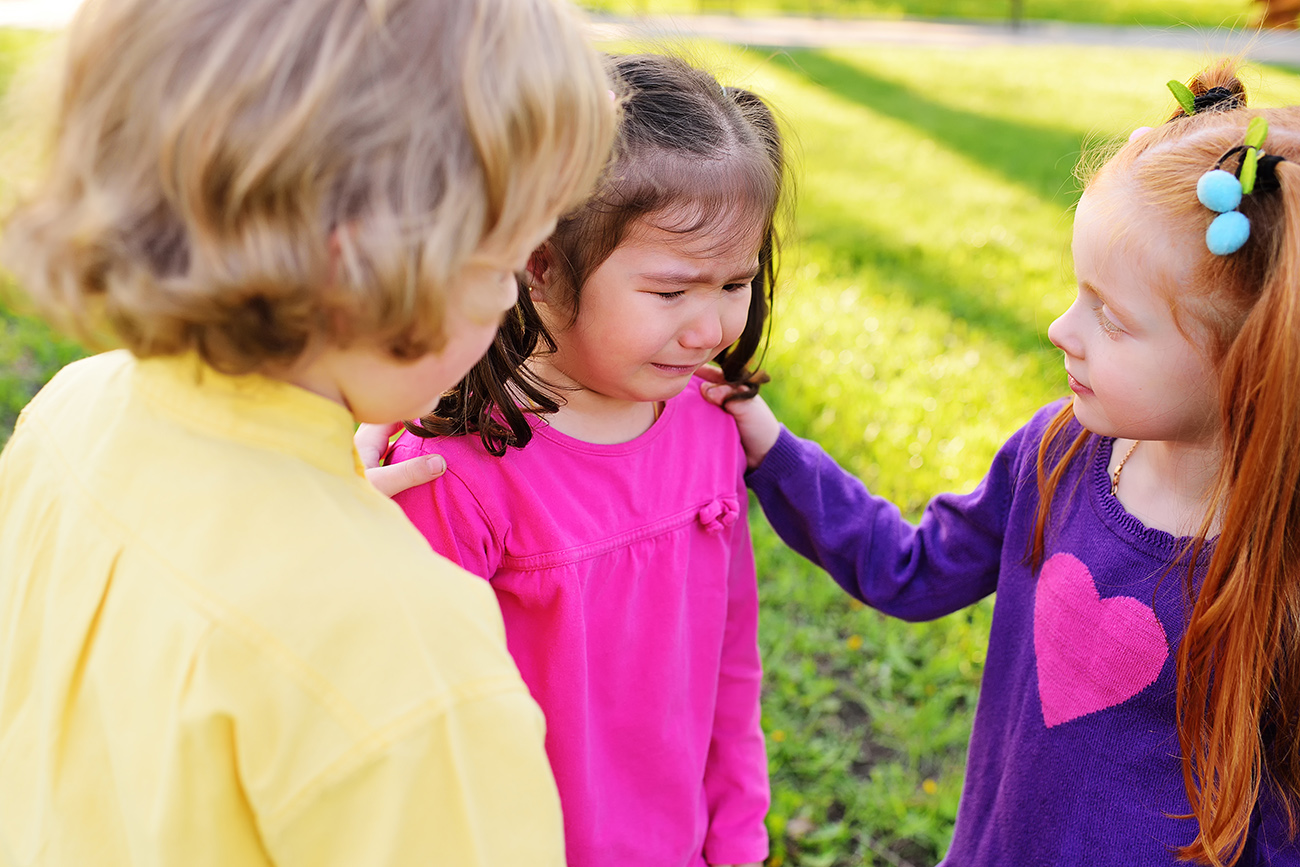Teaching Empathy to Kids
A valuable skill we can teach children is to have empathy. Often, teaching this social-emotional skill can be difficult to explain as it’s an abstract concept. However, teaching our children to understand and share in the emotions of others is key to their development, self-awareness, and connection to people in their lives.
What does the research say?
Research tells us that while we are born with the ability to be empathetic, it is also a learned behavior. (Poole, 2017). Being empathetic requires children to not only understand what another person is feeling but also determine how he or she would feel in that same situation (Kutner, 2017). This ability develops from self-awareness. A child must first understand his emotions before he can share in the emotions of others (Poole, 2017). Studies have shown that empathy does have an impact in the classroom. When teachers show empathy to their students, the students then act in the same, empathetic way. This was shown to improve both motivation and academic achievement (Wilson, 2016). Additionally, empathy lowers stress. So, by showing empathy in the classroom through both teacher-to-student interactions and student-to-student interactions, academic achievement improves, and stressful situations like bullying decrease (Wilson, 2016).
Benefits of teaching empathy to kids in the classroom?
- A more caring classroom: Empathy helps create a better, more positive learning environment where students feel valued and safe.
- Better academic achievement: When students feel that they are in a trusting and caring environment, they perform better academically.
- Less instances of bullying: When students are able to share in their classmates’ emotions, they are less likely to make fun of and bully others.
- Teaching empathy helps students respond authentically: If students are told to simply apologize, without a lesson in empathy, then they won’t learn that the feelings of others actually matter. Empathy helps students have authentic apologies and responses to other people.
While teaching empathy may sound like a great idea, it can also be a little intimidating to get started since it seems very different from teaching academic subjects. Read through these strategies to help you begin implementing empathy education in your classroom!
Empathy examples:
- Begin, simply, by just teaching your students words to describe feelings and emotions. You can hang pictures showing different emotions in your classroom. You can build on this and add in pictures of students showing empathy. (Poole, 2017).
- Have students come up with ideas on how to show kindness when real-life situations happen in the classroom. Rather than telling students what to do, ask them open-ended questions so they can begin exploring how to respond to others’ feelings. (Poole, 2017)
- Be an empathetic role model. Your students should see you showing empathy to them on a daily basis. Kids learn by example!
- Incorporate puppets into the classroom. Research has shown that children respond well to puppets and it’s a safe way to help students learn desired behaviors, like empathy. The puppets can “feel” different emotions and model the correct way to respond in those situations (Wilson, 2016)
- Help students learn to “read” nonverbal cues through the use of picture books. Sometimes people don’t say how they feel, we just have to figure it out by how they look and act. This is a very important skill for teaching empathy.
- Once children are around the age of 5, they can understand and respond to hypothetical situations. This is a great exercise in empathy. How would you feel if no one sat with you at lunch? How would you feel if you got pushed down on the playground? Talking through hypothetical situations helps students determine appropriate, empathetic responses to issues they might see at home or at school.
- Read fictional stories in class! Countless studies have shown that those who read and enjoy fiction grow up to be more empathetic adults.
Empathy is such an important skill that we can teach our little ones. Not only does it help to build a caring and nurturing classroom, but it also helps our students understand their peers, respond authentically and ultimately grow up to be more socially aware and understanding adults.
References
Kutner, L. (2017). How children develop empathy. Psych central. Retrieved from //psychcentral.com/lib/how-children-develop-empathy/.
Poole, C., Miller, S., & Church, E.B. (2017). Ages & stages: empathy. Scholastic: early childhood today. Retrieved from //www.scholastic.com/teachers/articles/teaching-content/ages-stages-empathy/.
Wilson, R. (2016). Empathy for the A. Teaching tolerance, Spring 2016(52). Retrieved from //www.tolerance.org/magazine/spring-2016/empathy-for-the-a.
Learn why it is okay for children to be bored here!
